Details
Description
SKU: CF.CM9734
Composed by Basque Carol. Arranged by Christopher Thomas. 12 pages. Duration 2 minutes, 37 seconds. Carl Fischer Music #CM9734. Published by Carl Fischer Music (CF.CM9734).ISBN 9781491161142. UPC: 680160919734. Key: A minor. English. Basque Carol.
A Basque Carol (also known as Gabriel's Message) holds a special place in Western music. The carol originates from Basque country around the 13th century, based on the Latin hymn, "Angelus ad Virginem" (likely of Franciscan origin). The tune quickly spread throughout Europe, finding popularity in Britain where it was even referenced in Chaucer's Canterbury Tales: "Playing so sweetly that the chamber rang; / and Angelus ad virginem he sang. . .". Interestingly, the melody we know and love today is derived from the original Basque version. In my view, this tune is a perfect example of melody-crafting. It is at once hauntingly beautiful, yet warm and joyous. Its contours are complex, dramatic, yet singable. I believe this melodic accessibility is the key to the song's lasting popularity. I would also attribute A Basque Carol's continued popularity to its elegant translation into English (by Sabine Baring-Gould, who rediscovered the original Basque tune). Translations often risk sounding unimaginative, coarse, and blunt. This translation is strikingly different. It was graced with an especially poetic translation including lines such as "his wings as drifted snow, his eyes as flame." I am very excited to offer a new perspective on this classic carol, joining the tradition of composers preserving and reimagining a priceless medieval melody. My first goal was to create a flowing, richly-textured, even cinematic string accompaniment for the choir. This approach was very much inspired by the dense, string-writing style of English composer Ralph Vaughan Williams. My second goal was to make the arrangement flexible enough to be performed with only choir, only strings, or (best of all) both ensembles combined. To further complement this approach, I've added an obligato line for a solo recorder (solo flute or violin work just as well). If you listen carefully, you will hear a quote from my other favorite holiday carol, Jesu Bambino. I hope you enjoy performing A Basque Carol. I especially hope that you sense the ancient magic cast into this tune, hearing the ineffable qualities that have compelled us to sustain it for nearly a millennium. Whether you're a choir, a string orchestra, or a combined ensemble, this arrangement of A Basque Carol will surely be a haunting and lovely addition to your next holiday program!.
A Basque Carol (also known as Gabriel’s Message) holds a special place in Western music. The carol originates from Basque country around the 13th century, based on the Latin hymn, "Angelus ad Virginem" (likely of Franciscan origin). The tune quickly spread throughout Europe, finding popularity in Britain where it was even referenced in Chaucer’s Canterbury Tales: “Playing so sweetly that the chamber rang; / and Angelus ad virginem he sang. . .”.Interestingly, the melody we know and love today is derived from the original Basque version. In my view, this tune is a perfect example of melody-crafting. It is at once hauntingly beautiful, yet warm and joyous. Its contours are complex, dramatic, yet singable. I believe this melodic accessibility is the key to the song’s lasting popularity. I would also attribute A Basque Carol’s continued popularity to its elegant translation into English (by Sabine Baring-Gould, who rediscovered the original Basque tune). Translations often risk sounding unimaginative, coarse, and blunt. This translation is strikingly different. It was graced with an especially poetic translation including lines such as “his wings as drifted snow, his eyes as flame.”I am very excited to offer a new perspective on this classic carol, joining the tradition of composers preserving and reimagining a priceless medieval melody. My first goal was to create a flowing, richly-textured, even cinematic string accompaniment for the choir. This approach was very much inspired by the dense, string-writing style of English composer Ralph Vaughan Williams. My second goal was to make the arrangement flexible enough to be performed with only choir, only strings, or (best of all) both ensembles combined. To further complement this approach, I’ve added an obligato line for a solo recorder (solo flute or violin work just as well). If you listen carefully, you will hear a quote from my other favorite holiday carol, Jesu Bambino.I hope you enjoy performing A Basque Carol. I especially hope that you sense the ancient magic cast into this tune, hearing the ineffable qualities that have compelled us to sustain it for nearly a millennium. Whether you’re a choir, a string orchestra, or a combined ensemble, this arrangement of A Basque Carol will surely be a haunting and lovely addition to your next holiday program!
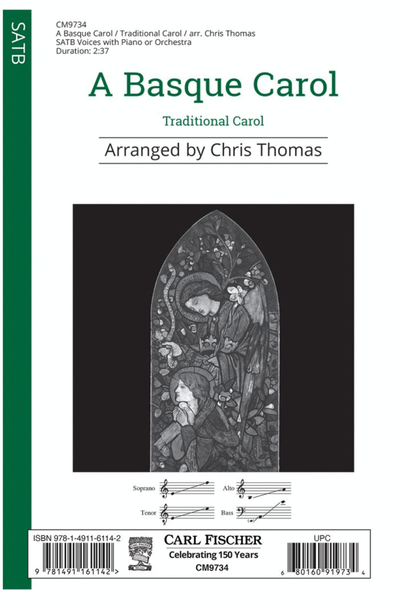
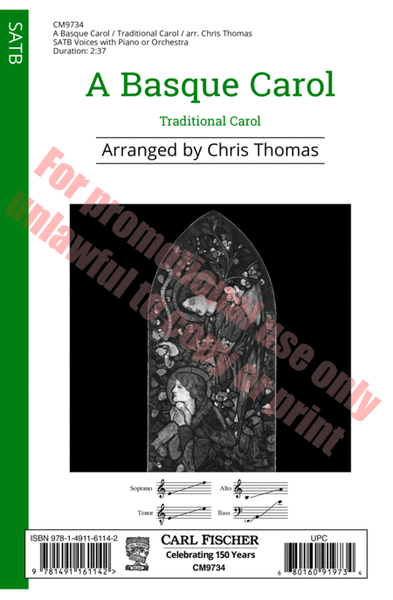
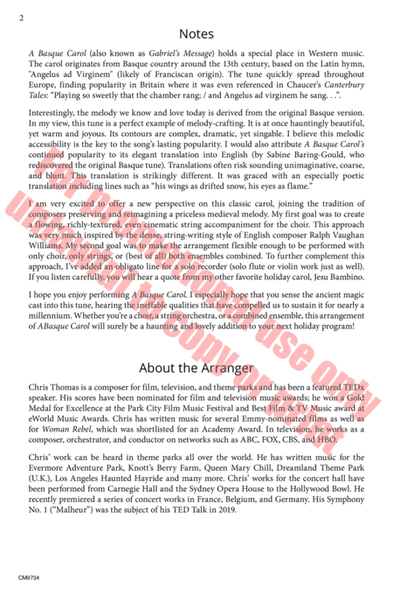
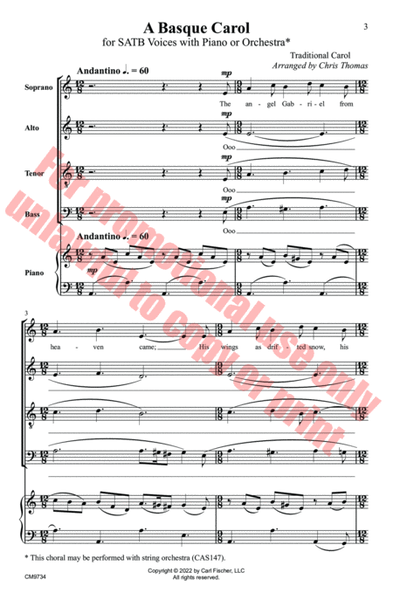
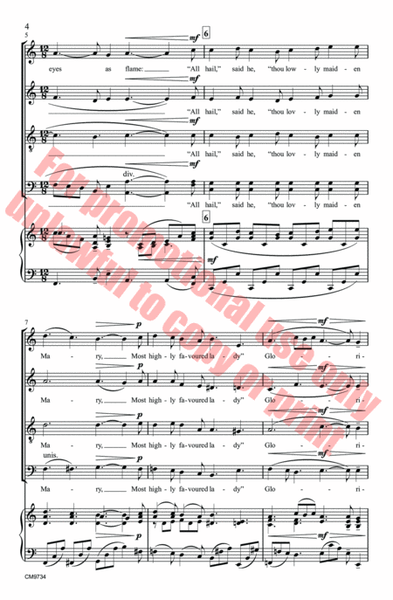
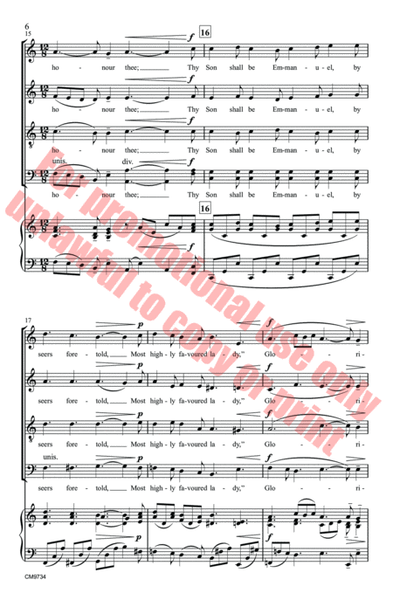
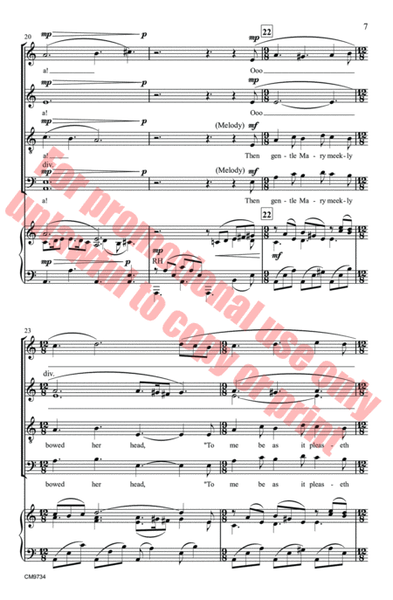
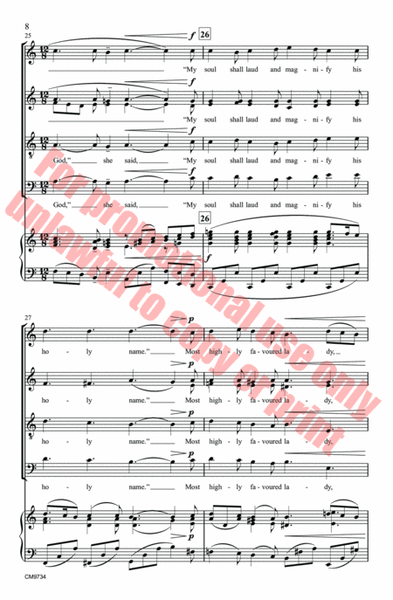
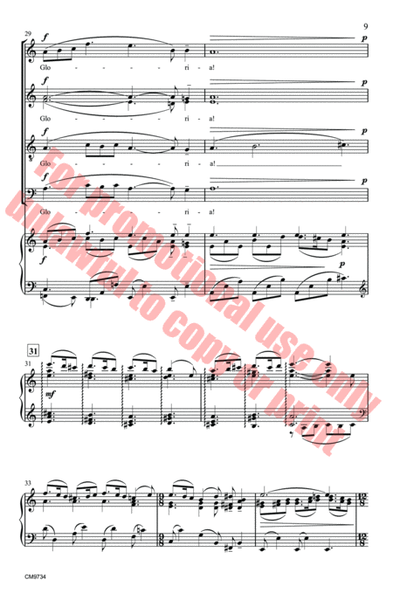
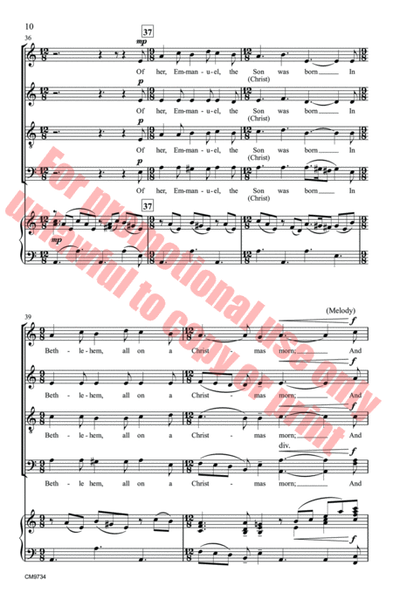
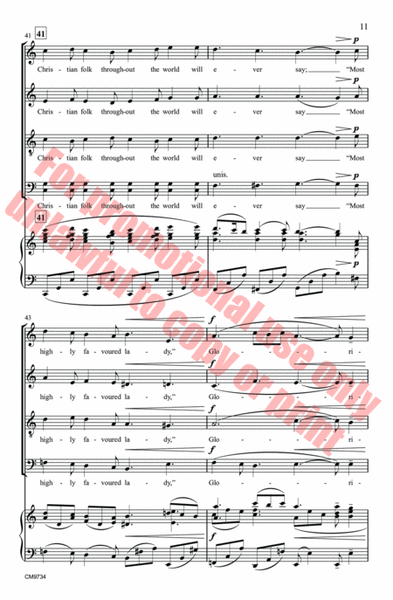
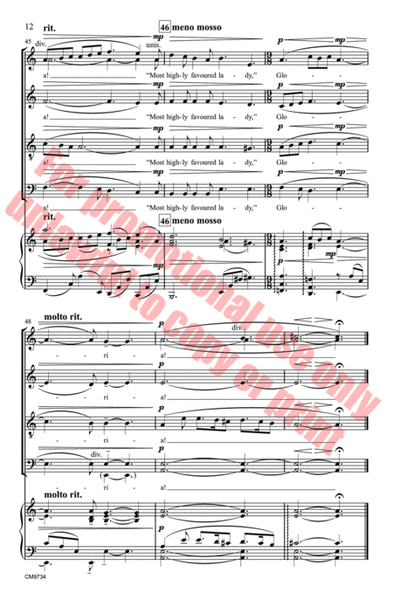
 Share
Share